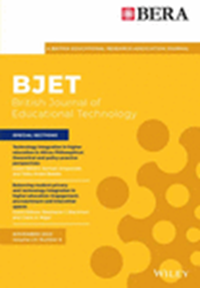Timing matters: Effects of augmented reality game on students' learning achievement, satisfaction and acceptance
Abstract
Augmented reality (AR) games offer significant potential to enhance learning experiences, yet the impact of when these games are introduced during the educational process remains underexplored. This study explored how the timing of providing the AR game influenced learners' achievement, satisfaction and acceptance. Using a quasi-experimental design, 68 second-graders engaged with the AR game AR Easy Sign Language: Grams and Kilograms, either before class or in class. Additionally, perspectives from eight students, one teacher and 24 parents (from the before-class group) were collected. Results indicated that providing the AR game in class significantly improved learners' achievement and acceptance compared to providing it before class. While overall satisfaction was unaffected by timing, students' cognitive focus differed: in-class participants emphasised the game's educational value, whereas those using it before class viewed it more as an entertaining tool with educational functionality. Both the teacher and parents acknowledged the educational value of AR games but expressed concerns regarding the cost and potential health issues. This study contributes to theoretical understanding and practical implementation strategies for AR games in education, particularly in optimising their timing for maximal impact.
Practitioner notes
What is already known about this topic
- AR games integrate the advantages of augmented reality and games, enabling learners to interact with virtual and physical objects in a fun way, bringing a new dynamic to education.
- Prior research has shown that AR games contribute to the improved learning process and learning outcomes.
- However, applying technologies such as AR games to authentic educational contexts is still challenging, as it involves many decision-making issues to be investigated. One key issue that remains unresolved is determining the optimal timing of providing AR games.
What this paper adds
- Providing AR games in class significantly enhanced students' learning achievement and acceptance, emphasising the need to carefully time such interventions.
- The timing of providing AR games influenced students' cognition, with in-class use promoting a focus on learning, while before-class use emphasised entertainment.
- Teachers and parents acknowledged the educational value of AR games for students, but they had concerns regarding potential visual health risks and the associated costs.
Implications for practice and/or policy
- Educators should determine the timing of providing AR games depending on the desired goal. Providing AR games before class allows students to focus more on the game experience while providing AR games in class allows for a focus on learning through the game and enhancing learning achievement.
- Students' cognition of technology may influence their usage and outcomes. Developers should design AR games with mechanisms that guide learners' cognition of educational content, while researchers should explore the effectiveness of such designs to achieve better learning outcomes.
- Educational institutions should select devices with built-in eye protection features and enforce screen time limits to mitigate visual health risks, addressing concerns raised by teachers and parents.
- AR games incorporating sign language have the potential to improve students' learning achievement, holding promise for applications in special education.



 求助内容:
求助内容: 应助结果提醒方式:
应助结果提醒方式:


